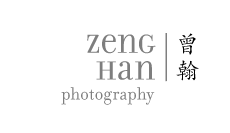真山水·鹊华秋色图考
(2017-未完成)
五代山水画大师荆浩在《笔法论》中认为:“画者,画也。度物象而取其真。”意即审度表现客观对象的形似,从而去探究把握其内存真实。荆浩所言之真,就是不局限于客观真实的哲思与生命体验的真,格物致知的真。山水画之于风景画的区别,就在于对景观的描绘虽可能源自实地风景,但却不仅仅是如实再现,而是要超越视觉经验而转化为更具普遍和终极意义的意象。
《真山水》系列沿用了中国绘画史特有的仿作之“谱系”模式,用摄影对山水画史上的重要作品进行实景考据,以拟仿的图像进行跨越时空的解构和重构。赵孟頫《鹊华秋色图》实景地的济南华山,近年正在彻拆周围原有村落居所以恢复赵画之景,然实则是围绕华山水景大造新城。长时间持续拍摄此变迁之景,意在诘问赵孟頫关于记忆和乡愁之山水意象,是如何被权力与资本合谋篡改成消费时代之欲望异象。
“艺术即历史”(方闻),而“一切历史都是当代史”(克罗齐《历史学的理论和历史》),对艺术史的当代呈现,便是我企图用摄影去调研和书写的当代史。
Real Shanshui-The Study of the Autumn Colors on the Qiao and Hua Mountains
The great master painter Jing Hao of the Five Dynasties considered painting as “observations of the objects and reflections on its truthfulness (zhen).” He commented on the painting’s capability of completing a verisimilitude representation, through which the observers would be able to gain the inner truth of the exterior. The truthfulness claimed by Jing Hao could be understood as one’s philosophical reflection or emotions toward the world, not restrained to its objective reality. The difference between the Chinese paintings of mountains-and-waters (shanshui) and the so called landscape painting is that the former expresses a transcendent experience that is more universal and would go far beyond the realistic representations and one’s visual experiences.
My series of Real Shanshui continues the artistic practice of studying and copying the master works of past, following the method that roots deeply in the tradition of Chinese art. Through the medium of photography, I am able to revise the lineage of mountains-and-waters paintings established by the ancient masters, and conduct my own research and expeditions to the actual sites appeared in their paintings. By copying and imitating the views depicted by them, I attempt to deconstruct the master works while reconstructing my own versions out of the work of deconstruction.
The Study of the Autumn Colors on the Qiao and Hua Mountains Mount was photographed at the Mount Hua of Jinan, the site depicted in Zhao Mengfu’s well-known painting bearing the same title. Recently, this place has been under severe reconstruction led by the local government with the purpose of tearing down the village houses and restoring the view in Zhao’s renowned piece of work. Ironically, another brand new city is being built under the name of reconstruction. Dedicating to photographing the changing views of this location throughout years, I try to address how the waters and mountains and their related memories represented by ancient painters are distorted by powers and capitals and have been turned into the images of the consumption society and its desires.
Wen Fong considers art history as a part of history; Benedetto Croce claims that all history is contemporary history. My aim is write and add my own contemporary notes to the great tradition of the paintings of mountains-and-waters in Chinese art.
